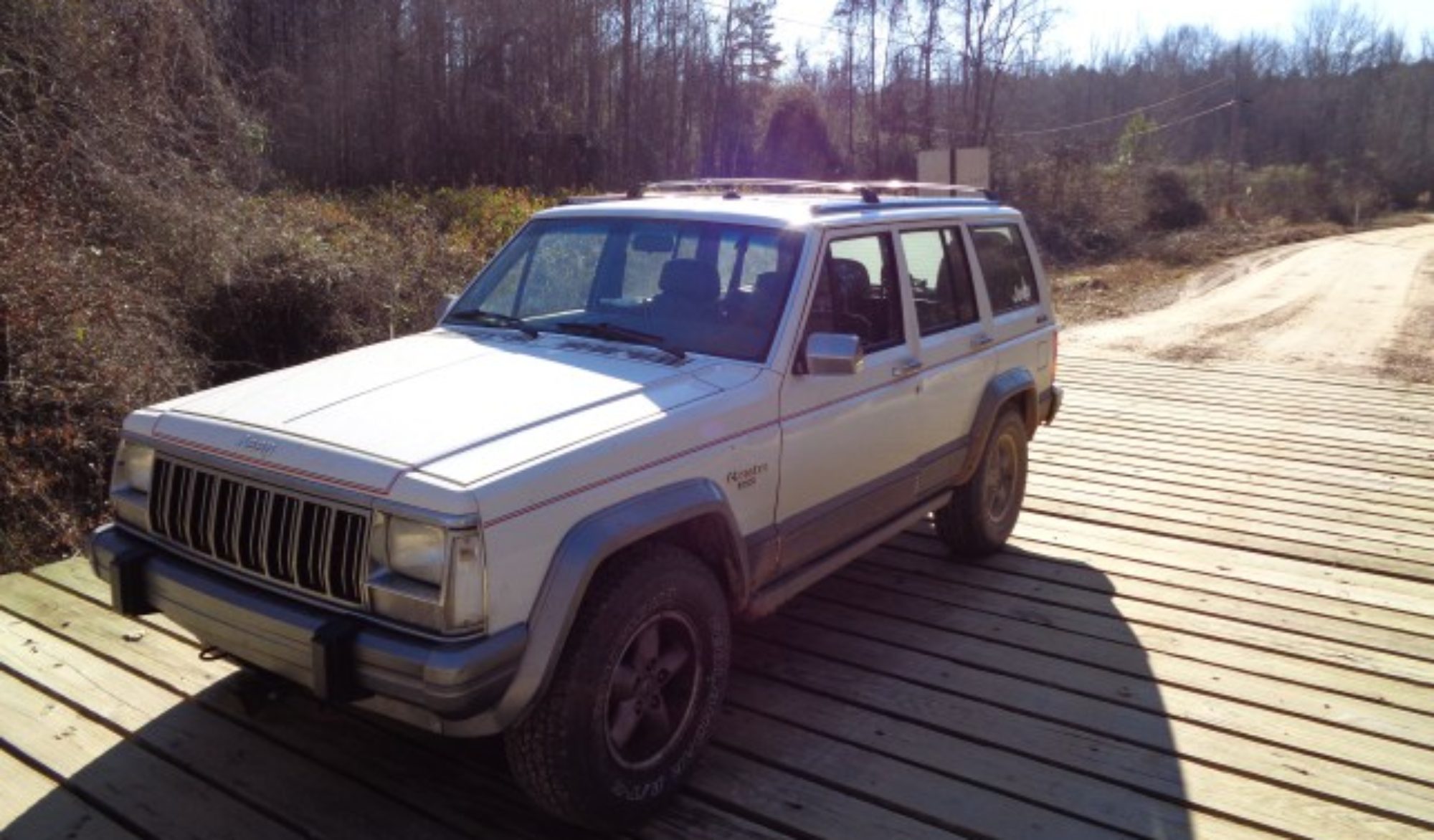Quick and Dirty Engine Rebuild
Jeep 4.0
Jennifer’s Jeep had a sudden severe clacking sound. With the head removed, there was no evidence of a problem. However with the oil pan off, parts of the piston skirt were found.
A quick internet search found several reports of broken piston skirts. Many of the pictures looked just like hers. The original idea was to replace just the one piston and put the engine back together. However, closer inspection of the other pistons revealed cracks in the same area of the skirts.
Due to the cost of replacement pistons, we elected to use pistons from an older engine we had in storage. The engine currently in her XJ is a 96 4.0 removed from a Grand Cherokee. The older engine was her original 92 model. The block was worn but the pistons were fine.
We noticed a major difference between the way the skirts were made on the older pistons. The older ones are much thicker. The older pistons use different rings so we had to order a ring set for the 92 engine.
We obtained a gasket set and a set of rod bearings as well. We elected to retain the original main bearings and not remove the crank or main caps.
We left the 92 pistons on their original rods and installed new rings and rod bearing inserts. The pistons ring grooves were carefully cleaned before the new rings were put in place.
We used a ridge reamer to cut the small ridge out of the top of the cylinders. The ring end gap was a few thousandths over spec but we felt was close enough; much lower than the gap on the original worn rings.
We used a cylinder hone to lightly scuff the cylinder walls. They looked smooth even in the hole with the broken piston.
We fitted a ring compressor over the piston and tapped it down into the cylinder bore. Rubber hose was placed over the rod bolts to help guide it over the crank and to protect the crank while driving the rod into place.
When the rod made contact with the crank, there was a notable change in the sound made when tapping the piston top. We would then move to user the Jeep and install the rod cap. While difficult, it was possible to find a position to place the crank so that the rod bolts could be accessed with torque wrench.
Once all six pistons were in place, we set the head back on. While the head was off, I installed the new valve seals that came with head kit. I used a KD tool valve spring compressor and carefully removed the retainers. I then pried off the old seals and tapped the new ones in place using a deep well socket as a driver. I then replaced the springs and keepers.
After start up, she drove about 500 miles before the first oil change. The engine seems to be running fine now. And it is much quieter.
